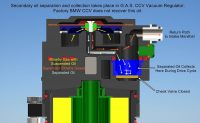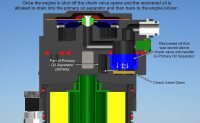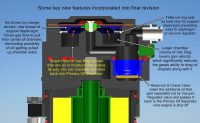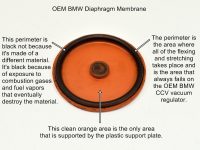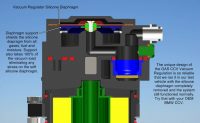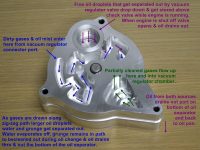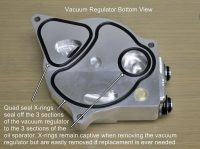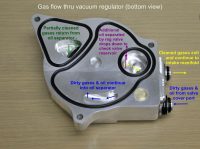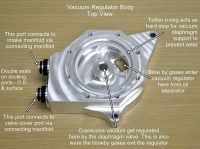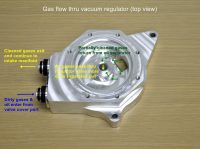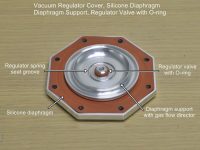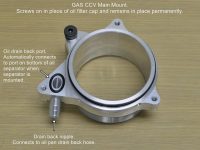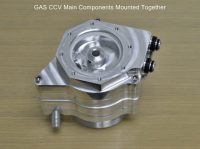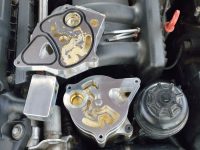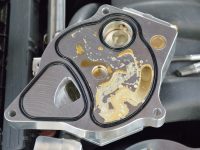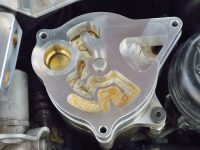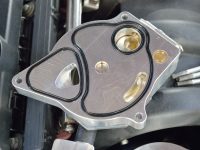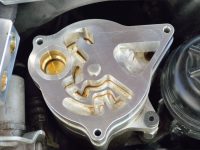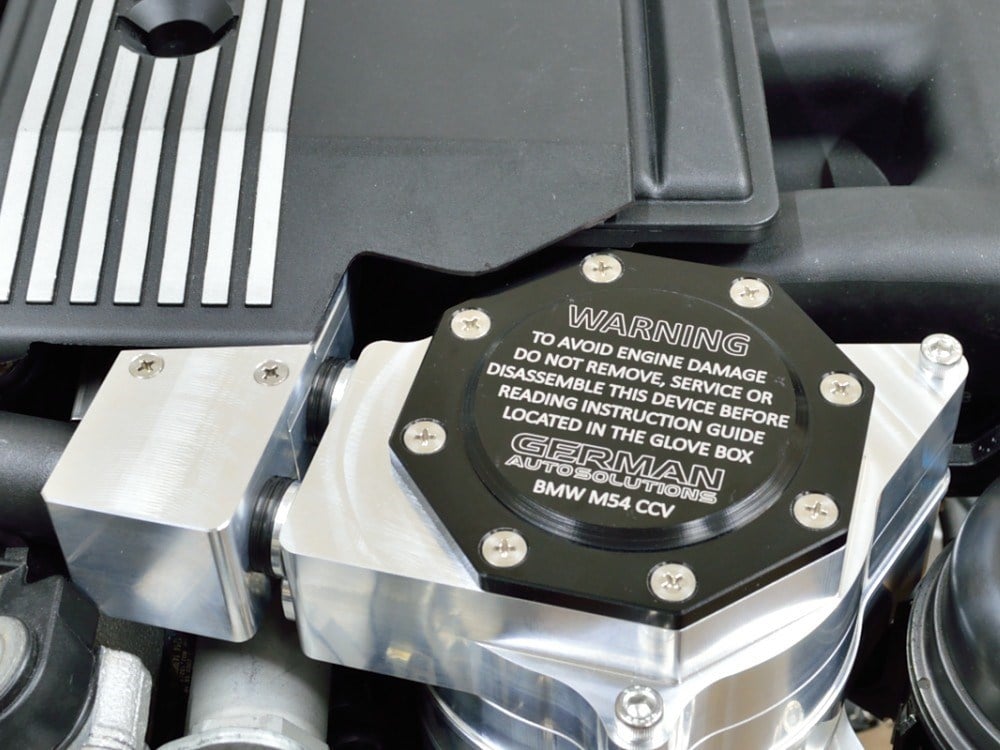These first three CAD images explain the functioning of the G.A.S. CCV’s unique secondary oil separator. This secondary oil separator feature is only available in the GAS CCV system, the OEM BMW CCV dumps this extra oil directly into the intake manifold. This one feature alone provides an improvement over the OEM BMW design.
The Top CAD image shows the blowby gas flow thru the vacuum regulator and secondary oil separator when the engine is running. Oil gets separated out when the blowby gas velocity drastically increases when passing thru the vacuum regulator valve. Separated oil collects in the reservoir above the check valve.
The middle CAD image shows what happens once the engine is shut off. When the engine stops, the pressure differential across the secondary oil separator check valve drops to zero, allowing the check valve to open. All the oil captured in the reservoir then flows into the primary oil separator and then back to the engines oil pan. The reservoir will hold enough oil to support an entire fuel tanks worth of driving without shutting off the engine, a situation that could happen on long highway trips.
The bottom CAD image highlights just a few of the many features that have been incorporated into the final revision of the German Auto Solutions CCV system. Every detail of the German Auto Solutions CCV replacement system is the result of extensive flow bench and real world testing.



